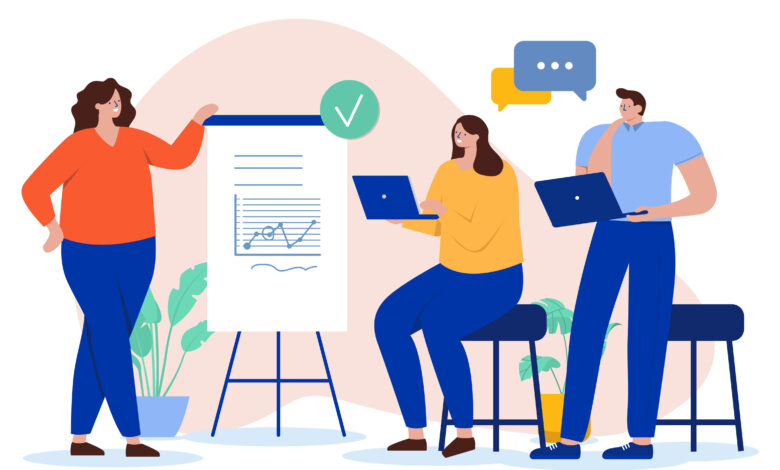The 4 Components of a Hybrid Training Approach
Leverage multiple training modalities to enhance learning and information retention in your employees.

The digital age has brought access to information at an immeasurable rate and has shifted the way many people learn, develop skills and build banks of information. Studies show that between the years 2000 and 2015, the average attention span was reduced by 25% to a mere 8.25 seconds.
When was the last time a video or image buffered on the internet and you moved on without viewing the media in its entirety? Can you remember the last time you sat down, undistracted, to read a newspaper or magazine from front to back? When did you last go to a movie, theater or concert and not reach for your phone? A study conducted by research firm Dscout found that the average user of a cellphone touches (types, taps, swipes, etc.) their phone 2,617 times per day. Unbelievable, right?
With the overwhelming information at our fingertips and constant distractions, how do we capture our team’s attention and create learning environments to effectively develop them? One answer is by creating active learning moments throughout our organizations. Active learning is defined by Dr. Laura Bierema, co-author of “Connecting Adult Learning and Knowledge Management,” as “the process of engaging learners with the topic and each other where they are talking, doing and creating.” Through active learning, information and skills are retained at a much higher rate.
By applying a four-step process to learning and development, we can create learning moments that are beneficial and engaging for ourselves and others. The four steps are tell, watch, try and do.
1. Tell
Begin each session with “tell” by communicating the why and “what’s in it for me?” (WIIFM) of the process or activity. Often the cause of disconnect or disengagement for our employees is a lack of understanding of the why behind the subject, the WIIFM and its impact on the employee. Without the groundwork to help people learn the regulations, facts, concepts and “what could happen if we don’t …” it is difficult to create personal accountability and engagement. Without the why, people tend to under-prioritize the activity or initiative they are set to learn, simply because they do not see the benefit to themselves or others. During your next training session, be sure to spend ample time exploring the why and WIIFM; the retention rate of knowledge and skill will increase significantly for all individuals involved.
2. Watch
Once we have the why in place, we move on to “watch.” This is where we demonstrate the action, activity or task we are teaching. With watch, employees can see the desired result in action. Equally impactful is demonstrating the undesired results and discussing the “what ifs.” Real-world applications of watch can include recorded or live role-plays, screen capture or videos, scripts or visualizing a scenario. The power of watch is demonstration – taking a written policy, process or best practice and showing our employees how exceptional actions are conducted.
3. Try
Next, we have “try.” This is one area where creating safe learning environments is extremely important. Throughout the training, focus on building trust, encouraging questions and celebrating both successes as well as missteps. During the try activities, we are asking the employees to trust the process, instructors, other learners and themselves enough to try something new. There will be mistakes, some steps will be forgotten and emotions that come with being vulnerable may creep in.
Encouragement and recognition are important as you work through the try step. Real-world applications here would be sandbox environments with common scenarios, hands-on learning with the equipment they will use, or simulations and scenario-based learning. Simple tasks may take only a few iterations of try, while more complex processes with multiple steps might require a substantial number of practice sessions.
Keep in mind that mastery happens over time with incremental improvement. It only takes 100 days to achieve 100% improvement when you improve by 1% each day. That is something worth thinking about!
4. Do
The last step in the process is “do.” It is most effective in a controlled environment with plenty of specific feedback. Without specific feedback, our employees will apply the most memorable portions of the training and may forget the more minute details. Creating a safe place to learn is of the utmost importance here as well. If we do not allow our employees to discover their own nuanced way of completing tasks, it causes disengagement — among other things. It might be the way they pack their tool bag, the way they document accounts or the way they handle and personalize a cold call.
These slight differences mean it is important to incorporate unique perspectives and demonstrate the value we see in their individualism. Just as we find in the try stage of learning, the time spent doing can vary in length and iteration. Employee confidence should be the driving force for the duration of this phase. A few real-world applications of do include unguided simulations, monitored completion of the task, creation of scripts or completion of role-play scenarios.
Moving away from listening to someone review a written process to active learning with a group discussion or a simulation, we can yield a 45% to 70% increase in retention of information. By fostering environments that drive mastery of skills and development of growth for our employees, we will see happier and more engaged employees and teams.



